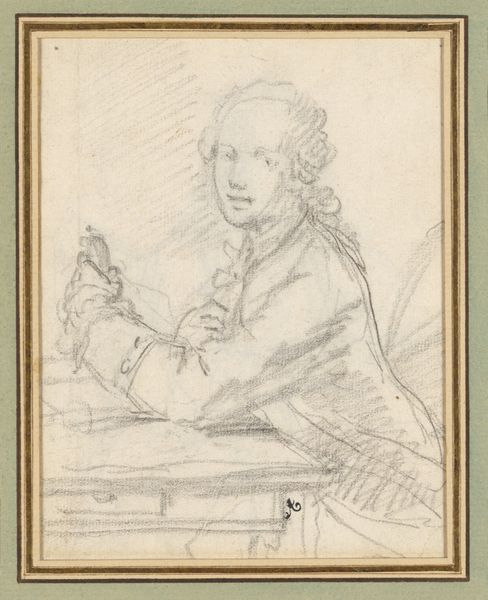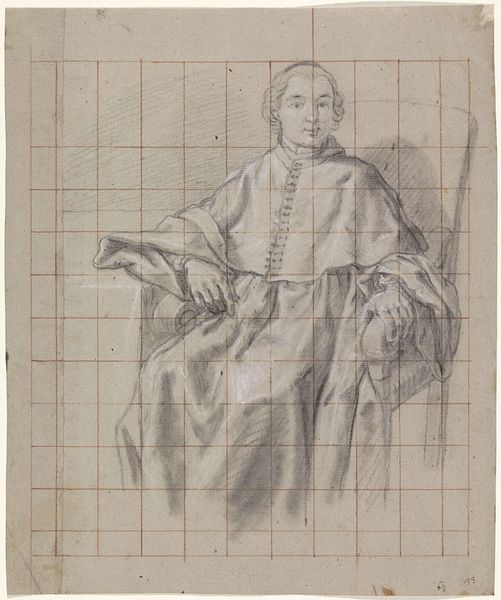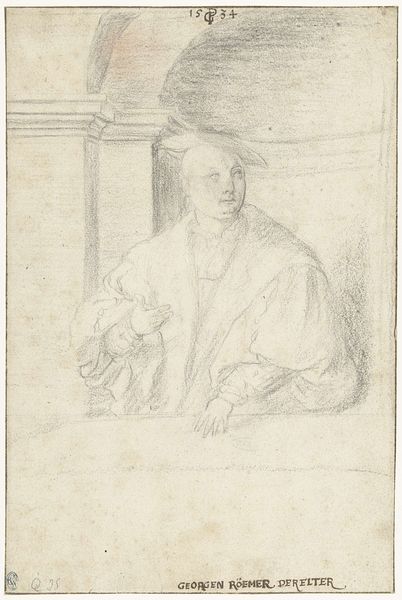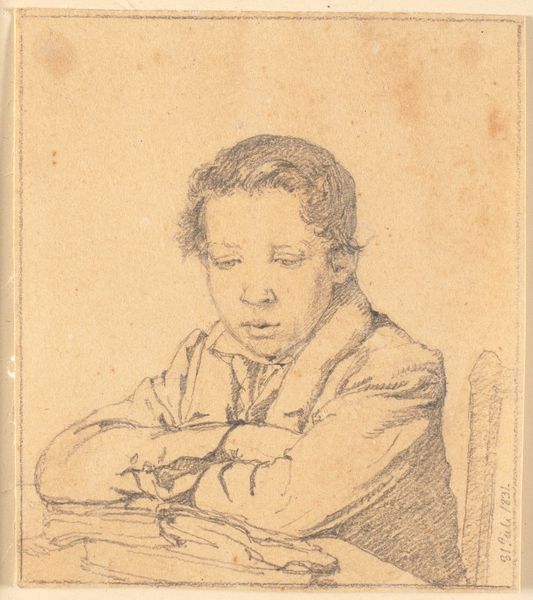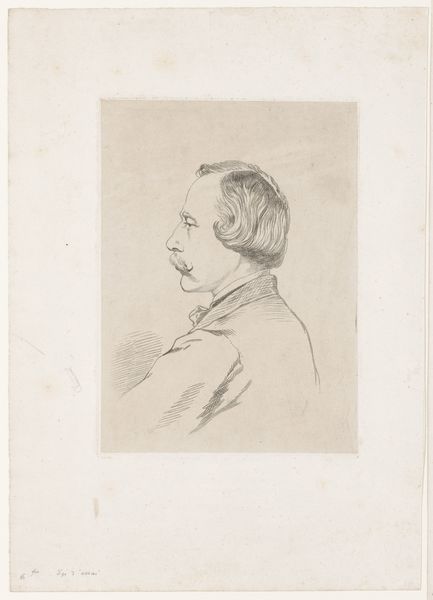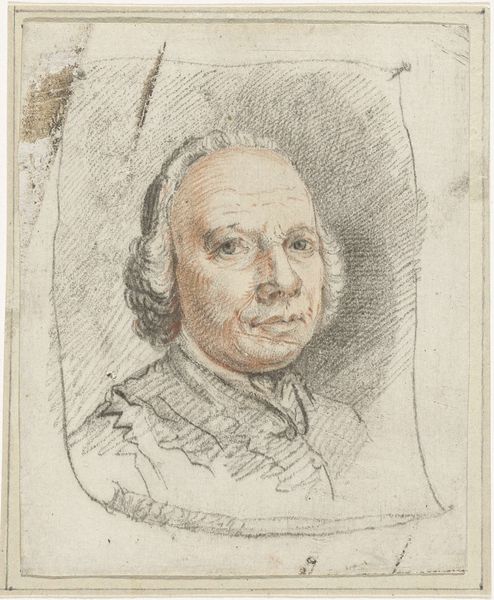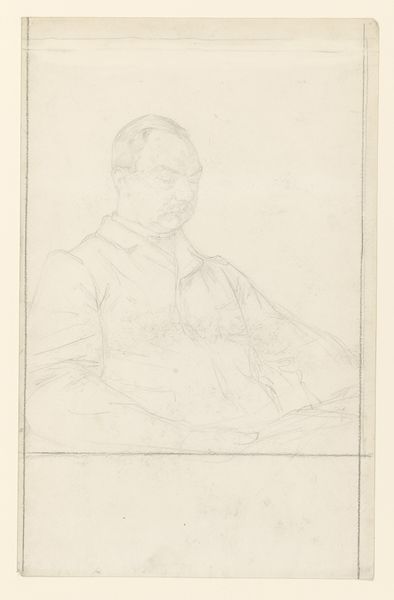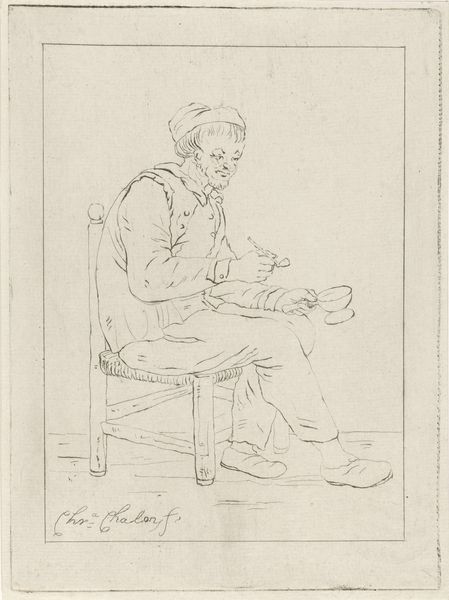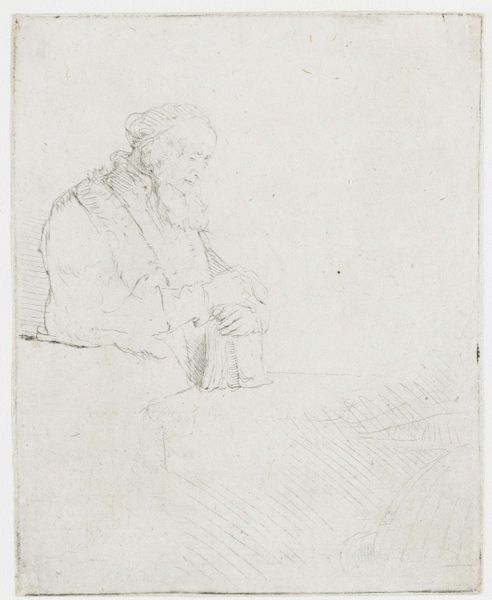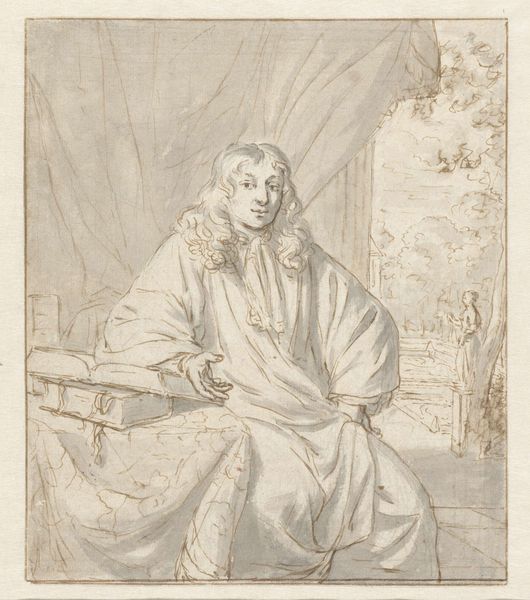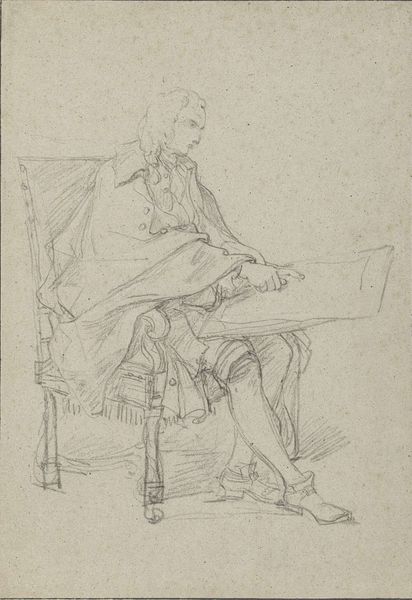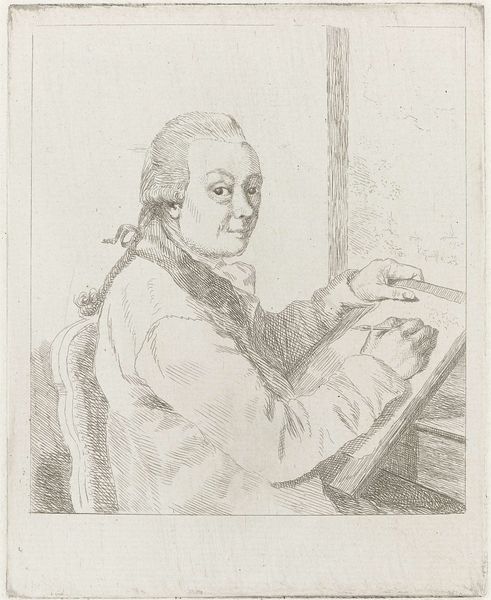
drawing
#
portrait
#
drawing
#
self-portrait
#
baroque
Dimensions: height 351 mm, width 272 mm
Copyright: Rijks Museum: Open Domain
Curator: We are looking at "Self-Portrait of Pieter Tanjé," a drawing from the 18th century currently residing in the Rijksmuseum. Editor: There's an almost dreamlike quality to this work. The warm sepia tone, the delicate lines, give it an ethereal feel, even before considering the meticulous underdrawing still visible. Curator: Tanjé offers an intricate perspective. Consider how the grid acts as an armature and counterpoint to the flowing lines defining his form and setting. This drawing reveals layers of meaning through its deliberate construction, mirroring the artist's self-awareness. Editor: Speaking of layers, observe the scene itself—the sitter at work among his tools. I see a pointed awl or burin laid out on his desk alongside an object to dab off excess ink. Note that the inclusion of the tools alongside the drawing gestures toward the social significance of craft within the context of the artwork itself. Tanjé wasn’t just an artist; he was a working man. Curator: Precisely, and that's visually articulated through composition. Look at how the lines converge on Tanjé's face, leading your eye inexorably to his gaze. The artist engages directly with the viewer, constructing a moment of intimate, yet formal, connection. The objects are essential compositional components of that intent. Editor: Still, what stands out is the level of finish—it's unfinished but precise. The tools, half-drawn architecture and ornament imply labour and the making process; even the grid reminds us of production rather than art object, suggesting Tanjé viewed this as both skill and creative expression. Curator: Indeed, the liminal state suggests process while establishing Tanjé's Baroque interest in representation and artifice. The carefully placed bust and drapery create a stage for his self-presentation. Editor: And through these means of artistic production, a new dialogue emerges through his labour to redefine categories like ‘art’ and ‘craft,’ offering modern viewers the chance to view those skills afresh. Curator: Yes, viewing Tanjé through the context of Baroque aesthetic rigor opens further pathways toward understanding both materiality and self. Editor: What is finally intriguing here is how the convergence of craft and skill can change the value of what we see.
Comments
No comments
Be the first to comment and join the conversation on the ultimate creative platform.
